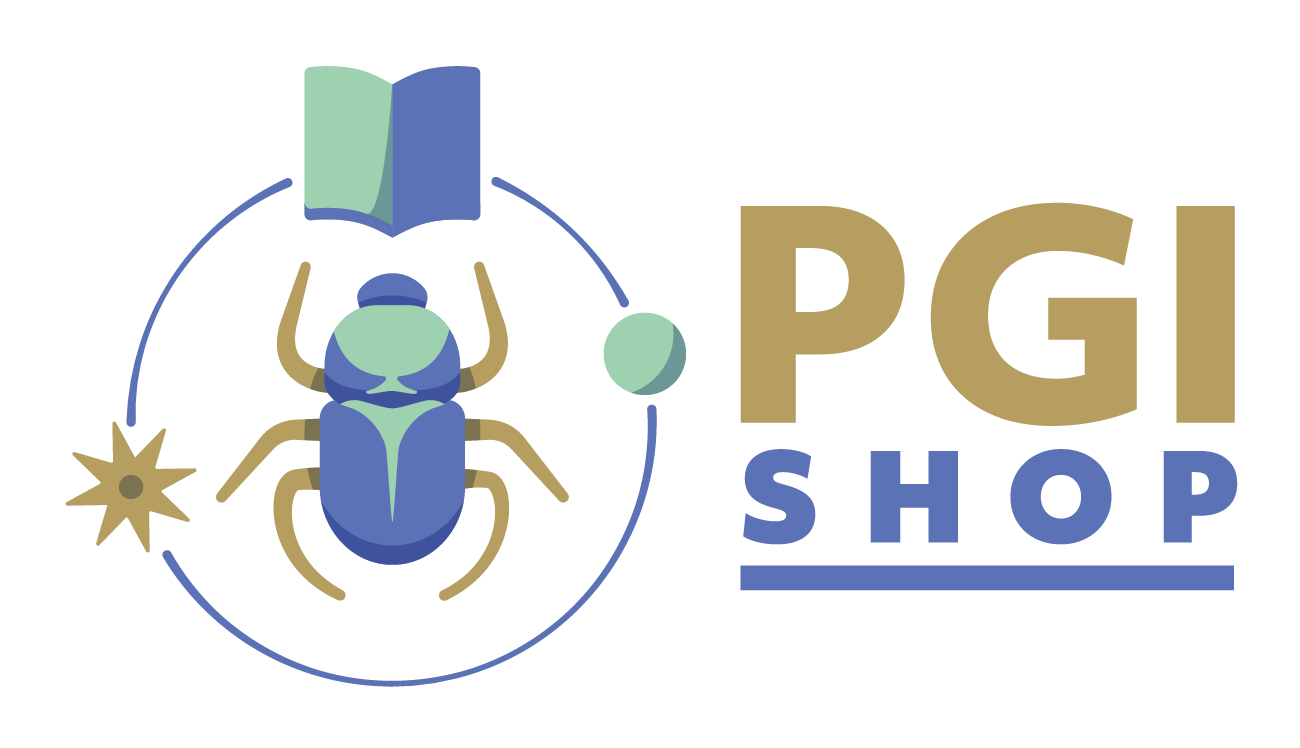Papyrus Bookmark - Thot painted
painted bookmark 5 cm x 19 cm in protective cover and decorative ribbon
PGI bookmark
made of hand laid papyrus, manufactured in Egypt
silkscreen motif, cut edge
Thot motif
Thot is the ibis-headed god of the moon, scribes, science and the calendar in Egyptian mythology. A writing tablet and rush are usually his attributes and he is regarded as the secretary of the gods as well as the inventor of hieroglyphics.
Inscriptions in buildings and papyrus records provide good evidence of how highly he was revered in ancient Egypt. In the Osiris myth, Thot was the scribe and vizier of Osiris, and as Horus' successor he ruled Egypt peacefully for 3000 years. Afterwards he ascended to heaven as the moon, but a demon constantly ate away at him, so that he was affected by periodic emaciation (different phases of the moon).
Thot is also the first month of the season "Achet" in ancient Egypt, at the latest from the New Kingdom onwards. As the god of the moon, he is also the god of time, since these are determined by the course of the moon. This also makes him the measurer, the god of measure. He represents the even order of the world, he is the inherent spirit of order and regularity. At the same time, he is the god of intelligence, the arranger of worship customs, the teacher of the arts and sciences, the inventor of language and writing, the patron of libraries.
Finally, Thot also has a significance in the concept of the afterlife in Egyptian mythology. He is the recorder of the court of the dead and notes whether the deceased are worthy to be admitted to the kingdom of the return or the kingdom of the dead.
Our papyrus offer
We offer bright, hand-laid natural papyrus from Egypt. From the size of a bookmark, over A4 and A3 up to oversizes of 92 x 192 cm, as well as various papyrus rolls, you are sure to find the right papyrus sheet. The design possibilities with papyrus are manifold. It can be inscribed with hieroglyphics or painted with various motifs. Tempera or watercolours, ink or felt-tip pens are suitable; it can even be printed with an inkjet printer.
Papyrus is a natural product
In the Nile Delta, papyrus leaves are still produced in the traditional way. Families in the countryside harvest the papyrus stems, which can be up to 6 metres high, and process the raw material into papyrus leaves with great skill. Carefully crafted papyri are produced in several steps, which always have an individual, handcrafted character.
The history
Papyrus has been produced and used as a writing material in Ancient Egypt since the 3rd millennium BC. It was always a highly valued product whose sole marketing rights lay with the Pharaoh. The German word "Papier" goes back to the Greek word "pápyros", which in turn is based on the ancient Egyptian word "pa-en-per-aa", which roughly means "the pharaoh's".
If papyrus is stored in a dry place, it has a very long life. Thus, papyrus scrolls or fragments that provided information about life in Ancient Egypt were and are still being found. The most famous papyrus scrolls are probably the Herculaneum Papyri, which were buried and preserved by the massive eruption of Vesuvius in 79 AD. Another 400,000 papyri from the ancient Egyptian Oxyrhynchus are still waiting to be deciphered and will once again bring much of interest to light. Julius Caesar is probably responsible for the greatest loss of knowledge in history. His soldiers set fire to the library of Alexandria, destroying thousands of important papyrus manuscripts.
Fair trade with Egypt
PGI buys Egyptian products directly from the producer. This allows us to bypass traders' stations and offer our customers favourable prices. But the Egyptian producers also benefit from this direct marketing, they achieve much higher prices for their products. We regularly visit our partners in Egypt and discuss the upcoming needs on site.

